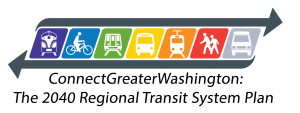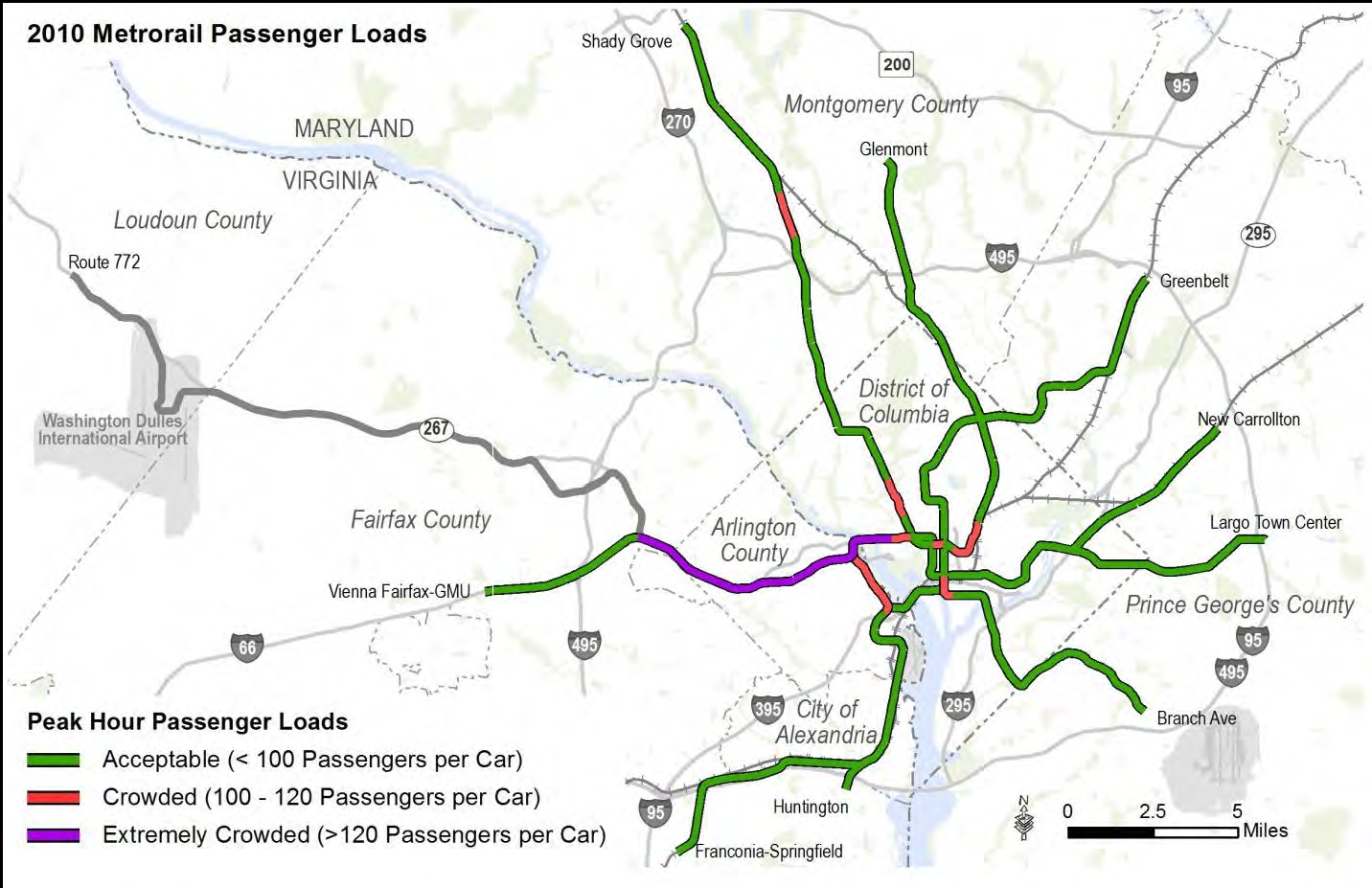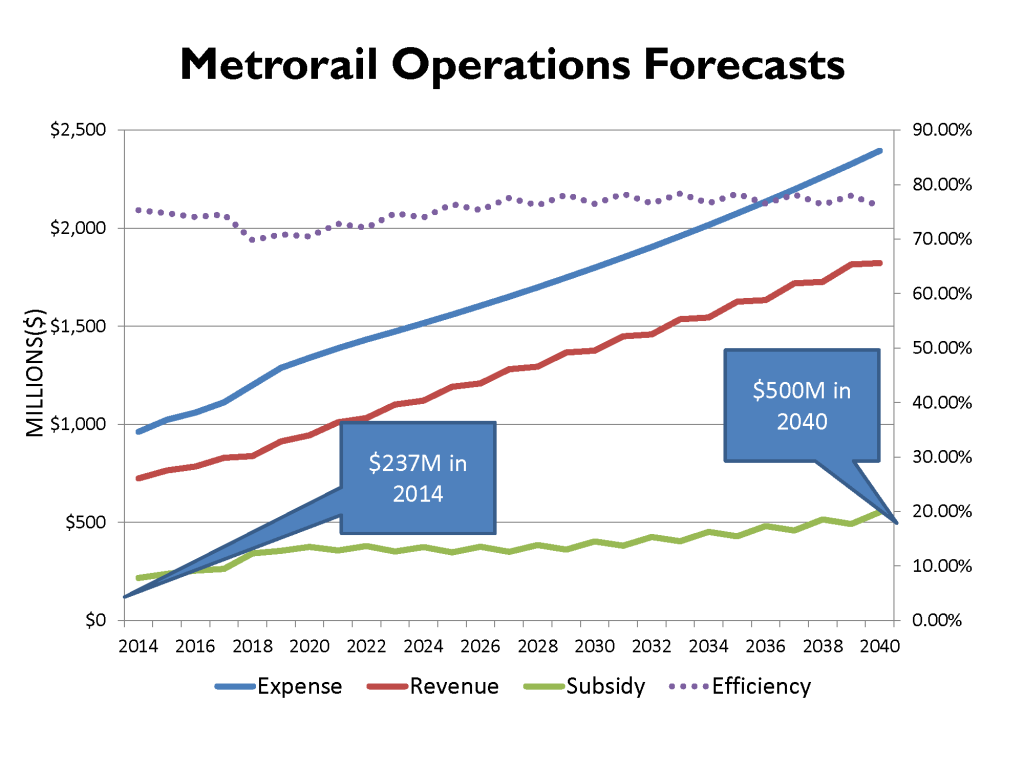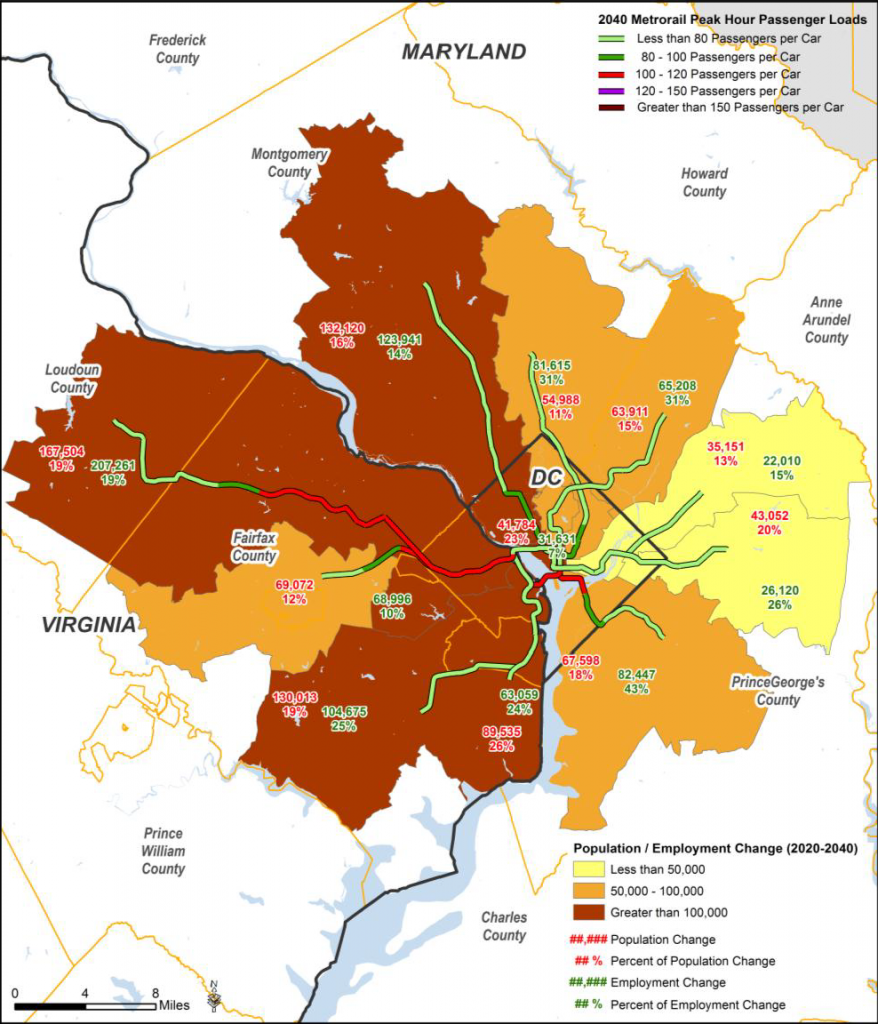Beyond Borders – Acting Regionally to Create a Financially-Sustainable Transit System (Part One)
What if taxpayers could avoid spending hundreds of millions of dollars annually on Metro’s operating subsidy? Better yet – what if Metro could pay for itself and have enough left over to fund local transportation projects? What if better using the transit system we already have could help us achieve this? This isn’t just wishful thinking – it is possible.
 (This is the first post in a series of posts that assess applying land use as a transportation strategy)
(This is the first post in a series of posts that assess applying land use as a transportation strategy)
Recently some of the Washington region’s prominent leaders issued a call to action for this region to cease competing against itself if it is to secure its economic future. Their courageous statement coincided with findings from WMATA’s Office of Planning that actually put a price tag on that promise. And it’s a doozy. In case you missed it, at the Coalition for Smarter Growth‘s Smart Growth Social recently, Shyam Kannan, Metro’s Managing Director of Planning, gave a presentation on the impact of regional cooperation on the region’s finances and specifically, what this could mean for Metro and its ridership, operating subsidy, funding partners, and taxpayers.
What he presented is the second half of ConnectGreaterWashington (CGW). As a reminder, the first part of CGW was a long range plan that identified infrastructure expansion needs across all transit operators in the region. It assumed that we would grow as the local jurisdictions have estimated in the cooperative forecast. This second part asks a different question. It challenges us to make do with the transportation system we have already built. Can the region’s growth, rather than necessitate billions of dollars in new infrastructure, be distributed differently to better utilize the roadway and transit systems we already have? What would that mean to the region, its finances, and to Metro’s operating subsidies that its funding partners pay annually?
So the study contemplates, compares, and contrasts two distinct paths. Grow the way we have been growing and build our way out of congestion. Or choose to grow around our existing infrastructure and use it to its maximum capacity. In the coming weeks, we will be posting the detailed analysis here on PlanItMetro. It’s lengthy and wonky, so be prepared for a series of in-depth posts.
Why Is Metro (A Transit Operator) Talking About Land Use?
Over the past 40 years, the region has invested heavily in its transit system, but we are not using to its full capacity. Yes, there’s the Orange Crush and crowded platforms at Union Station, Gallery Place, the Farraguts and Metro Center during the peak periods. However, as shown in green on the map below, there are many many other segments and stations that are underutilized, carrying significantly fewer passengers than we have room for. This is counter-intuitive, especially since by definition crowding occurs because more riders are present, but trains are running end to end, regardless of if people board. Since rail networks, including ours, run end to end, and running the trains incurs cost, Metro’s funding partners (hint: that’s you!) pay for the service whether people are filling the seats or not. And the choice to do this year after year is costing all of us dearly.
Real-life examples (and our research) prove that locating housing, jobs, and commerce around rail stations and near stops along bus corridors directly increases ridership and revenue. If regional leaders want to pay less for Metro, the local and state governments need to work together as a region to make development decisions that use the system we already have more efficiently, attract more riders to transit, and balance demand across the system, in all directions, and throughout the day.
Compounding the Problem
Between 2020 and 2040, the region expects to add about 870,000 more jobs (25% increase) and 1 million more people (16% increase). As shown in the map below, much of that growth is planned where transit is already at or exceeding capacity, while many other areas that have high-quality transit continue to be underdeveloped. The result: more congestion. 72% more than today (PDF, slide 8) during the morning commute, minimal change in transit mode share (PDF, slide 10), and consistency in the number of trips by car as compared to today.
With the forecasted growth and ongoing challenges to pay for, build, and operate new infrastructure and services, Metro and regional leaders are at a crossroads, and the region has two real choices: build roads and transit to chase future land uses, which could entail addressing the crowded areas (e.g. the parts shown in red west of Rosslyn, the downtown core), while agreeing to continue to pay operating costs for the underutilized parts; OR embrace full-cost accounting by approaching development decisions as a region, supporting the location of jobs, housing, and commerce around rail stations and along bus stops and corridors where there is capacity and where we are going to pay for those trains to run, passengers or not.
Potential Benefits if the Region Acts Like a Region Regarding Future Land Use
Metro recently completed analysis that asked, “What if the region acted like a region (instead of competing against itself) and made land use a primary transportation strategy?” The answers showed tremendous benefits – to the jurisdictions’ bottom lines, region’s environmental footprint, the intractable east-west divide, and residents’ commutes, including:
- Greater ridership for all transit operators, increasing farebox revenue and lowering public subsidies.
- More reverse commuting, enabling Metro to sell the same seat twice and increase revenues without increasing operating costs.
- Lower vehicle miles traveled across the region, not just per capita, and doubling transit mode share, resulting in lower greenhouse gas emissions and less time stuck in traffic.
- More jobs within 45 minute commute of more households, turning the tide on the East-West divide.
- Balanced demand across the Metrorail system, indicating a much more efficient use of our investments.
- More crowding on trains and buses, which will require capacity expansion, especially in the region’s core. However, the increased ridership and revenues could provide sufficient regional funds to support system expansion.
Only by acting as a region, investing as a region, making land use decisions as a region, can we achieve this together.
The remainder of the series of blog posts will give more details of the work, goals, and where we go from here. Stay tuned!





Recent Comments